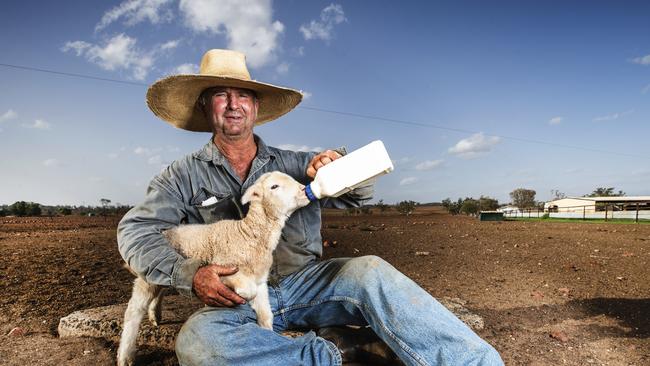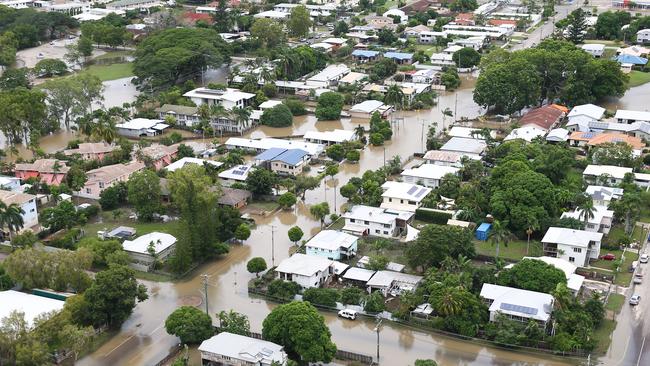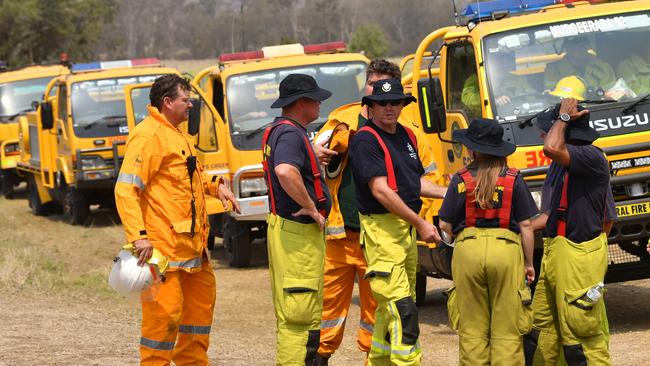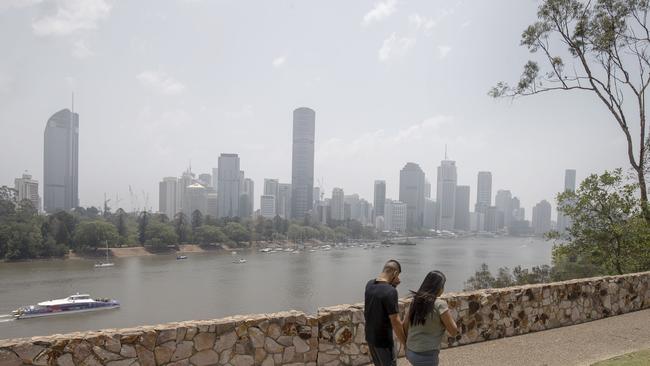Back the Bush: Why the drought is no longer just an outback problem
Think the drought is only something affecting farmers? Think again. Some 85 per cent of Queensland towns are now so dry they’re at risk of a major bushfire.
QLD News
Don't miss out on the headlines from QLD News. Followed categories will be added to My News.
MORE than 85 per cent of Queensland towns monitored as part of a key drought study are so parched they are at risk of a major bushfire, including cities that just months ago were under water.
The Keetch-Byram Drought Index (KBDI), seen by The Courier-Mail, reveals 60 out of 70 towns monitored are now in the grips of devastating “severe” drought and “extreme” fire dangers.
BACK THE BUSH: DON’T LEAVE US HIGH AND DRY

Conditions are so bad in 13 of the towns, they now have a KBDI rating of 200 or above – meaning they are experiencing “extreme drought” and would need rainfall of 200mm or more to recover.
They include places like Cooktown (202), Kowanyama (203), Coen (202), Georgetown (201) and Horm Island (203) - townships more commonly associated with cyclones and flooding rain.
Even Townsville, which was largely under water in February, has dried out rapidly, with its KBDI hitting 200 on Friday.

AgForce CEO Mike Guerin said people often didn’t realise that a single flood event, such as the one seen in northwest Queensland and the Townsville region earlier this year, was not enough to “break the drought”.
“Often a severe drought means the ground is so dry that there is too much water (from a flood) for the landscape to handle and when you don’t get good follow-up rain, and we didn’t this year, it does not take long for that to dry up,” he said.
He said people living in cities and coastal communities were now seeing the big dry on their own doorstep in the form of fires, dwindling dam supplies and water restrictions.
“Some small communities are trucking in water,” he said.
“It is cruel if you don’t find yourself under that black cloud. Water is critical.”
The KBDI measures soil and vegetation moisture on a scale of zero (saturation) to 200-plus (extreme drought), and is one measure used to calculate the state’s fire danger rating.
It shows how much moisture is required to return the soil, forest litter, logs and living vegetation back to saturation.
The higher the number, the more rain needed to reduce the risk.

Other towns in the Herbert and Lower Burdekin region, which also recorded significant rainfall totals earlier this year, have also dried out, including Ingham (200) and Ayr (196).
Mackay has rapidly dried out, recording a KBDI of 197 at the airport and 194 in the town.
Cairns (189), Bundaberg (180), Gladstone (159), Gympie (164), Innisfail (179), Rockhampton (176), Roma (178), Toowoomba (168) and Warwick (167) have also recorded a severely dried out landscape.
Brisbane also hasn’t escaped the big dry, with the index showing the city continues to dry out and has now reached 168 on the scale - up four points in just a matter of days. The data does not indicate where that measure was taken.

Two thirds of the state (66.1 per cent) is now drought-declared, with 33 local government areas fully-declared and four partially-declared.
QFES Northern Region bushfire safety officer Gordon Yorke, who oversees about 30 per cent of the state, said this season had been “crazy”.
“You talk to the fellas who have been around for years, and they will all tell you there is a trend and everyone needs to amend their fire management plan to suit that trend,” he said.
Mr Yorke said the KBDI was one tool used to gauge the fire threat, and it showed many locations were “stressed”.
“And we won’t see that risk reduced until we see substantial rain,” he said.
“The fuels are completely dry and completely available (to burn) and if those ladder fuels catch and allow the fire to get in to the canopy, it will just run.”
As a result of the heightened fire weather conditions, and with no significant rain in sight, a State of Fire Emergency was declared across 42 local government areas last week.
Mr Yorke said one of the biggest issues this fire season was the “small window of opportunity” to do hazard reduction burns in many areas.
He said landholders in many areas were unable to conduct hazard reduction due to saturated soils, but those same soils had since dried out rapidly.
He said even coastal areas that did not ordinarily experience such dire fire conditions were under threat due to the weather conditions.
The latest outlook from the Bureau of Meteorology does little to alleviate those concerns, with current modelling predicting a drier than average rainfall forecast for the rest of the year.
“While outlooks for drier than average conditions may ease for some areas heading into 2020, several months of above average rainfall would be needed to see a recovery from current long-term rainfall deficiencies,” the outlook said.


